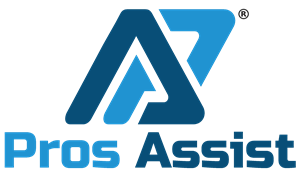Whether you are self employed or employed and receiving untaxed income, you would have
had to, at some point, file a Self Assessment Tax Return, or atleast sign one that was prepared
by your accountant. Within the UK, there are set deadlines for when you have to pay your
taxes by to H M Revenue & Customs. The two main dates are 31st January and 31st July.
Let us take the first date, 31st January. If your calculated tax liability for the financial year
ended 5th April 2015 was £5,000 and you had not made any Payments On Account during
the year, you would have to pay the full liability, £5,000, to H M Revenue & Customs by 31st
January 2016.
At this point, H M Revenue & Customs will base your next financial years tax liability to be
similar to the previous one. So they are assuming you will have to pay £5,000 in 31st January
2017 for your financial year ending 5th April 2016.
Based on this forecast, H M Revenue & Customs now expect you to make a part payment for
the future tax liability. They expect you to make a payment of half of this liability. So you
pay £2,500 (half of £5,000) on 31st January 2016 for the future year, along with the total
liability of £5,000 for the financial year ended 5th April 2015. Thus, making the First
Payment On Account.
The Second Payment On Account is due by 31st July 2016. Again, as H M Revenue &
Customs forecasted that you will have a similar liability of £5,000 to pay by 31st January
2017, they expect the Second Payment On Account to be made during the year by 31st July
2016.
This is beneficial for those that have generated a larger income during the current year than
the previous year. As H M Revenue & Customs are only expecting you to make the minimum
payment, during the year, that covers the forecasted tax liability.
However, once you have made both the First Payment On Account and the Second Payment
On Account by 31st January 2016 and 31st July 2016 respectively. If your tax liability for the
financial year ended 5th April 2016 was higher than the tax liability in the previous financial
year, you will have to make a Balancing Payment by 31st January 2017.
With this Balancing Payment, you will also make your First Payment On Account for the
forecasted tax liability for the financial year ended 5th April 2017. For example, if your tax
liability was £7,000 for 5th April 2016 then you will make a payment of £2,000 (the
Balancing Payment) along with £3,500 (the First Payment On Account) by 31st January
2017.
If your tax liability for the financial year ended 5th April 2017 was lower than the tax liability
in the financial year ended 5th April 2016, then you have a Balancing Repayment, this means
that you have paid too much tax during the year and will be repaid the difference. However,
the First Payment On Account is still expected by H M Revenue & Customs, only this time,
the First Payment On Account will be reduced by the Balancing Repayment.
For example, if your tax liability was £4,000 for 5th April 2016 then you will be repaid
£1,000 (the Balancing Repayment) and you will have to make a payment of £2,000 (the First
Payment On Account), therefore the net payment of £1,000 by 31st January 2017.

